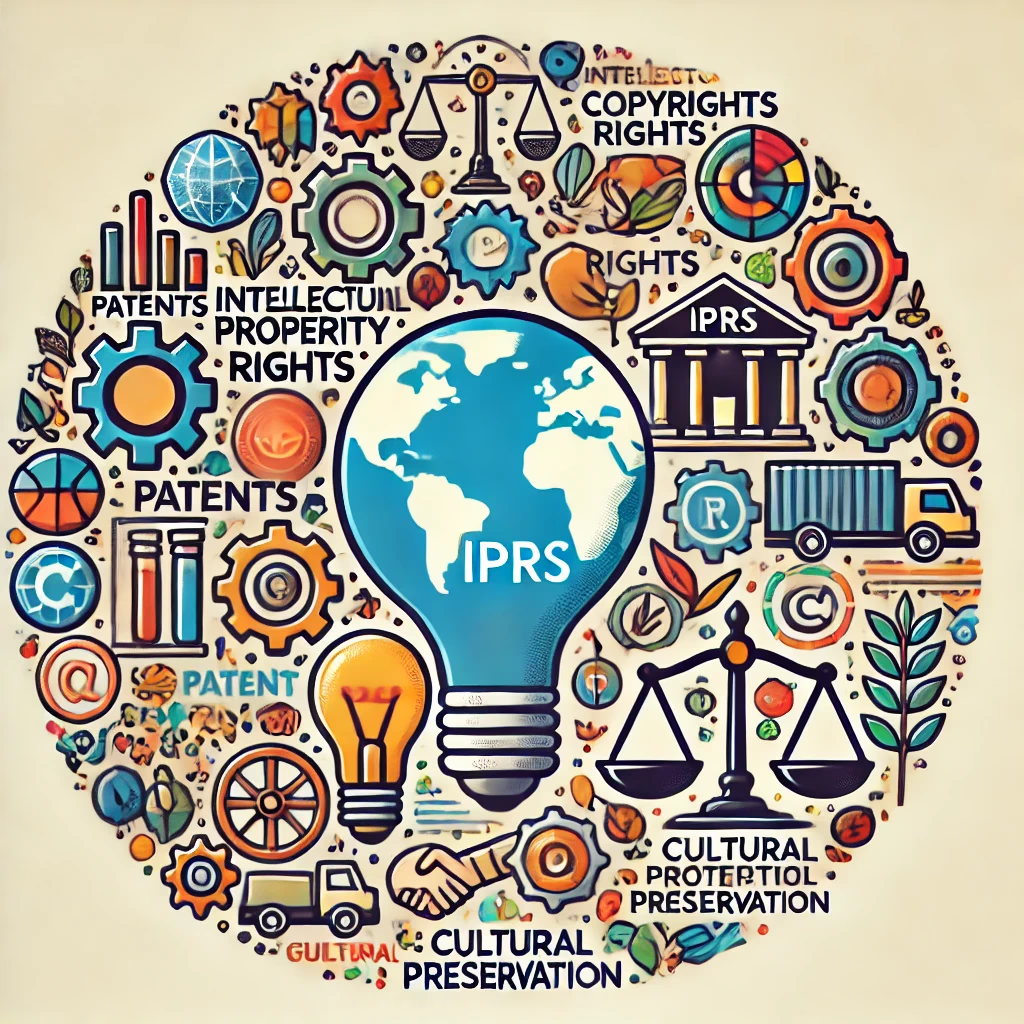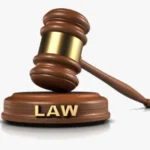Introduction
Intellectual property (IP) has transformed over the centuries, according to the social, economic, and technological evolution. At the heart of intellectual property is the recognition, legally, that ideas and creative expression have value, and thus deserve protection. This article follows the historical development of intellectual property, particularly in the field of art and literature, in the Indian context to show how intellectual property can adapt to an evolving culture, technology, and the interests of creators, consumers, and society.
The course of intellectual property illustrates how humanity’s relationship with innovation and creativity has evolved. Intellectual property has changed from being recognized informally by ancient cultures and societies, eventually developing to complex multilayered and international legal frameworks. While it can be argued that all types of intellectual property have evolved in a contested environment between the interests of authors and their right of authorship and the collective right to make knowledge available to an infinite audience, there can be no greater expression of these tensions than in the case of art and literature, in which creativity and culture have increasingly become problematic for the commercialization of cultural and creative enterprises.
India offers an engaging example of how divergent historical and socio-economic realities have shaped and influenced its contextually situated relationship with intellectual property. Throughout India’s history there has been rich historical traditions of sharing knowledge and artistic diversity mixed with colonial impositions of knowledge claims and legal and policy developments post-independence; as such, it is a rich example of how intellectual property systems can be capable of adapting to local cultural contexts. India’s ‘story’ provides some lessons in both the pitfalls and possibilities for developing an IP framework that attempts to respect and protect traditional knowledge while also enhancing and engaging with international normative and applicable standards of IP.
The Historical Roots of Intellectual Property
Intellectual property is an ancient concept but the legal protections we refer to today are fairly recent developments. Many ancient cultures recognized, in some way or another, the importance of giving credit to the originator of ideas and creative works without formalized ways of enforcing such attribution.
In ancient Greece, for example, poets and dramatists were considered the creators of their works, and plagiarism was a moral crime. The Romans also developed early forms of trademark protection in the sense that craftsmen marked their goods as early recognizable markers of source and quality. Early trademarking had a greater concern for attribution and preservation of reputation than with creating distinct economic rights.
The guild system established by craftsman during the medieval period controlled the production and distribution of goods by specific trades. These guilds provided rudimentary forms of trade secrecy and quality control and opened doors for future meaning of intellectual property. Likewise, in pre-colonial India, indigenous knowledge systems such as Ayurveda established informal means to recognize innovation while understanding the significance of knowledge transmission.
The contemporary understanding of intellectual property began to take shape with Renaissance Europe. The Venetian Patent Statute of 1474 is often recognized as the first formalized patent law because it allowed inventors exclusive rights for a limited period of time. The first copyright law in England, the Statute of Anne (1710), also provided authors exclusive rights to publishing for 14 years.
The Evolution of IP in Colonial and Post-Independence India
The geography of India’s intellectual property rights has been shaped by colonialism and subsequently by the country’s path as an independent nation. Under colonialism, Indian intellectual property laws were introduced with a primary aim of servicing colonial interests, not necessarily of promoting locally exploited innovation or protecting indigenous knowledge.
The first patent law in India came via the Patents and Designs Protection Act of 1856 (which much of legally is derived from the British), and copyright protection in India was also introduced under colonialism through the introduction of the Literary Copyright Act of 1847, which was replaced with the Copyright Act of 1914. All in all, these laws were created under the premise that they were protecting an English interest in India, and they systematically preserved traditional approaches to knowledge sharing [from] and cultural expression with its indigenous populations.
Following independence in 1947, India embarked on the process of creating IP laws that would satisfy India’s national interests. The Patents Act of 1970 was a radical departure from colonial-era policies, explicitly limiting patent protection for pharmaceuticals to foster the development of India’s nascent generic drug industry and to enhance public access to medicines. Similarly, the Copyright Act of 1957 replaced the colonial-era legislation, but still retained vestiges of significant Western influence.
The most significant changes to India’s IP regime occurred in response to the provisions in the Agreement on Trade-Related Aspects of Intellectual Property Rights (TRIPS), which was established in 1994. India was obliged to comply with the TRIPS Agreement in order to qualify for World Trade Organization membership, as of which the country was obliged to greatly strengthen its IP protections. This obligation led to the Patents (Amendment) Act of 2005, which reinstated pharmaceutical product patents; established amendments to Indian copyright and trademark laws, and initiated increased compliance with international standards in general.
Today, India has a comprehensive IP framework composed of the Patents Act, 1970 (as amended), the Copyright Act, 1957 (as amended), the Trade Marks Act, 1999, the Designs Act, 2000, the Geographical Indications of Goods (Registration and Protection) Act, 1999, and the Protection of Plant Varieties and Farmers’ Rights Act, 2001. These laws demonstrate India’s best efforts to strike a balance between international obligations and priorities at home.
Art Literature, And IP: The Indian Context
Traditional Knowledge and Cultural Expression
India’s diverse cultural heritage poses some challenges to the constructs of traditional intellectual property. Traditional knowledge, folklore and cultural expressions often fall outside realms defined by Western intellectual property models which were created with an individual approach to creation and commercial exploitation.
Art forms would include traditional art forms like for example, Madhubani painting of Bihar, Warli art of Maharashtra, or classical dance like Bharata Natyam which have been developed by communities and not by individual creativity. Similarity, traditional literary forms like oral storytelling traditions and folk songs as examples of oral traditions and as modes of cultural heritage, are evidence of the construction of the culture and reflect the collective as was the customary tradition versus an individual’s authorship.
Indian courts have faced challenges when applying the usual IP protections to these traditional design forms. This was evident in the well-known case, Swar Sangam v. Tanishq (2005), where the Delhi High Court was required to assess if traditional designs utilized in jewelry could be protected under copyright law. In addressing this issue, the court expressed that while it was arduous to forms of authorship as is usually required for copyright terms in relation to traditional designs, it acknowledged that there was a compelling need to address possible misappropriation of traditional cultural heritage values.
The Protection of Traditional Knowledge Bill, which has been in draft form for more than several years, intends to address these issues by providing sui generis protection for traditional knowledge. Who should be entitled to enjoy this protection is another difficult issue. There are ongoing tensions in providing protection for cultural heritage values while enhancing and facilitating ways of innovating based on traditional designs.
Literary and Artistic Copyright in Modern India
In Indian law, the Copyright Act of 1957 and its amendments offer the underpinning of protection for literary and artistic works in India. The Act covers original literary, dramatic, musical and artistic works, cinematograph films, and sound recordings and in general, copyright (or the right of reproduction), lasts for the author’s life and sixty years thereafter. Several significant cases have shaped the interpretation of copyright law in India:
1. R.G. Anand v. Delux Films (1978): In this landmark case, the Supreme Court of India established that copyright protects the expression of ideas, not ideas themselves. The court held that “where the same idea is being developed in a different manner, it is manifest that the source being common, similarities are bound to occur.” This case remains fundamental to understanding the idea-expression dichotomy in Indian copyright law.
2. Eastern Book Company v. D.B. Modak (2008): The Supreme Court addressed the issue of copyright in judicial opinions, holding that while judgments themselves are in the public domain, substantial editorial enhancements could be protected by copyright. This case highlighted the balance between public access to legal information and the rights of those who add value through editorial work.
3. The Chancellor Masters and Scholars of the University of Oxford v. Rameshwari Photocopy Services (2016): In this significant case concerning educational fair use, the Delhi High Court ruled that making photocopies of copyrighted academic materials for educational purposes fell within the fair dealing exception under Indian copyright law. This case underscored India’s prioritization of educational access over strict copyright enforcement.
4. Amar Nath Sehgal v. Union of India (2005): This case established the moral rights of artists in India. When the government removed and stored a bronze mural created by Sehgal in a manner that damaged it, the Delhi High Court ruled that this violated the artist’s moral rights, even though the government owned the physical artwork. The court recognized that moral rights include the right to preserve the integrity of the work.
These cases illustrate India’s efforts to strike a balance between copyright protection and public interest and in particular for education and cultural preservation. Copyright (Amendment) Act 2012 solidified authors’ rights while extending fair use for education and research.
Digital Challenges and Responses
The digital revolution has dramatically questioned traditional IP regimes globally, and India is no different. Digital technologies are providing opportunities for coordination and massive copying and sharing of creative works, as well as new forms of artistic and literary expression. Courts in India have responded to these challenges by issuing a series of important decisions:
1. Super Cassettes Industries Ltd. v. MySpace Inc. (2016): The Delhi High Court addressed intermediary liability for copyright infringement, holding that websites must take reasonable steps to prevent copyright infringement but recognizing the practical limitations of monitoring all user-uploaded content.
2. Tips Industries Ltd. v. Wynk Music Ltd. (2019): The Bombay High Court ruled on streaming rights for music, holding that statutory licensing provisions did not extend to internet broadcasting, thus requiring explicit licenses for streaming services.
3. UTV Software Communications Ltd. v. 1337X.TO (2019): The Delhi High Court issued “dynamic injunctions” against piracy websites, allowing rights holders to extend injunctions to mirror websites without filing new lawsuits. This represented an attempt to address the whack-a-mole problem of digital piracy.
Geographical Indications and Cultural Products
Geographical Indications (GIs) have emerged as a particularly important IP tool to protect culturally significant artistic and literary products in India. The Geographical Indications of Goods (Registration and Protection) Act, 1999, provides limited protection for products of geographic origin and quality based on the origin. Numerous artistic and literary products that have been also given GI protection are:
Banarasi Sarees and Brocades: These intricate textiles from Varanasi received GI protection in 2009, recognizing their unique weaving techniques and cultural significance.
Kangra Tea: This distinctive tea from Himachal Pradesh received GI status in 2005, protecting both its agricultural heritage and the cultural practices associated with its production.
Thanjavur Paintings: These distinctive paintings from Tamil Nadu, characterized by gold leaf work and gemstone inlays, received GI protection in 2007.
Mysore Silk: The traditional silk fabric from Karnataka received GI protection in 2005, recognizing both its production techniques and cultural significance.
GI protection has the potential to enhance and protect community-based art forms and cultural products which provide collective rather than individual rights. This aligns with India’s typical communal way of creating cultural products and knowledge.
Contemporary Challenges and Future Directions
Balancing Tradition and Innovation
One of the main challenges in India’s IP scenario is reconciling the protection of traditional knowledge with fostering innovation. The traditional knowledge digital library (TKDL) was created in 2001 and is one attempt to deal with this issue. The TKDL records traditional medicinal knowledge so that patent examiners worldwide can find this prior art and prevent patents from being wrongfully granted.
The case of neem (Azadirachta indica) illustrates this tension. In the 1990s, a U.S. company patented pesticides derived from neem. Neem has been known to farmers and healers in India for hundreds of years. The patent was revoked by the European Patent Office (EPO) in 2000 when the Indian traditional knowledge of neem was accepted by the EPO (along with other prior art) as a reason to deny patent status. The neem patent case indicates the need for IP systems that protect traditional knowledge while maintaining engagement with innovation.
International Harmonization and National Interest
As a member of the World Trade Organisation (WTO) and a signatory to various international IP treaties, India is always under pressure to further align its IP regime with worldwide standards. In contrast, India has continued to argue that it has the right to implement these agreements to the extent they meet the national interest (including public health and access to knowledge).
As mentioned above, the tension is best illustrated by the Novartis AG v. Union of India (2013) case. In this case, the Supreme Court of India denied Novartis a patent for its cancer drug, Gleevec, by utilizing the “enhanced efficacy” requirement embodied in Section 3(d) of the Patents Act to halt the “evergreening” of pharmaceutical patents. This case exemplified India’s position that IP protection must be mediated by public health.
Similar tensions exist in the realm of cultural IP. India has consistently argued in international forums that greater protection for traditional cultural expressions, genetic resources is required, arguing for the ability to create an international legal instrument at WIPO.
Emerging Technologies and IP
Emerging technologies such as artificial intelligence, blockchain technologies, etc., pose unique challenges to IP systems around the world. In India, these issues overlap with ongoing rapid technological change and also India’s cultural heritage.
When it comes to AI generated art and literature, we are confronted with basic questions about who is the author and as well, what is originality? Under the Copyright Act, authorship is presumed to be that of a human being leaving open the question of whether copyright protection would even apply to copyright works produced by machines. Blockchain technologies also offer new ways to manage rights in digital content but would need adaptation to existing legal and regulatory systems.
The Delhi High Court has begun to address some of these issues. It was considering the application of trademark law to e-commerce in the case of Christian Louboutin SAS v. Nakul Bajaj (2018), among other things, it suggested that changes would be needed to adapt traditional IP systems to the new realities of digital commerce. There is still much work to be done in developing substantive legal frameworks for emerging technologies.
Conclusion
The development of intellectual property in India with respect to arts and literature is a diverse mix of historical and traditional practices, colonial imposition, post-independence aspirations and international pressure. India’s experience illustrates both difficulties and opportunities in developing IP frameworks that honor cultural heritage, promote innovation and engage with global standards.
As India continues to contend with these tensions, there are some principles that can guide the future development of Indian IP law:
Cultural Contextualization: IP frameworks should recognize and facilitate the cultural contexts in which creative works are made and consumed, which may require a sui generis approach to protection for traditional knowledge and cultural expressions.
Balance of Interests: Effective IP systems should try to balance the interests of creators, consumers and society at large. This means being cognizant of the lawful limits to IP rights that may legally exist, such as limitations on copyright for educational and cultural purposes in the form of fair use.
Technological Adaptation: IP frameworks must be adaptable to technological change, but still maintain the fundamental principles of the frameworks. This necessitates legal adaptability and the ability to adapt the framework to meet regulatory obligations.
Global Nearness of Local Necessities: India is able to continue engaging with international IP systems while asserting ownership over and continuing to reflect national priorities in the implementation of those systems, particularly as far as access to knowledge, preservation of cultural material is concerned.
The saga of intellectual property in India is a tale not yet finished. As India continues its journey of becoming a global economic and cultural powerhouse, it will certainly continue to develop its approaches to intellectual property, perhaps revealing new models for balancing traditional knowledge with modern innovation, individual rights with collective interests, and global standards with local priorities.





![Call for Papers: International Conference on ‘Role of International Trade in Global Energy Transition’ by NLUO, Cuttack [Sept 19 – 20]: Submit Abstract by June 15!](https://legitimateindia.com/wp-content/uploads/2025/05/Screenshot-1386-e1746203965152.png)